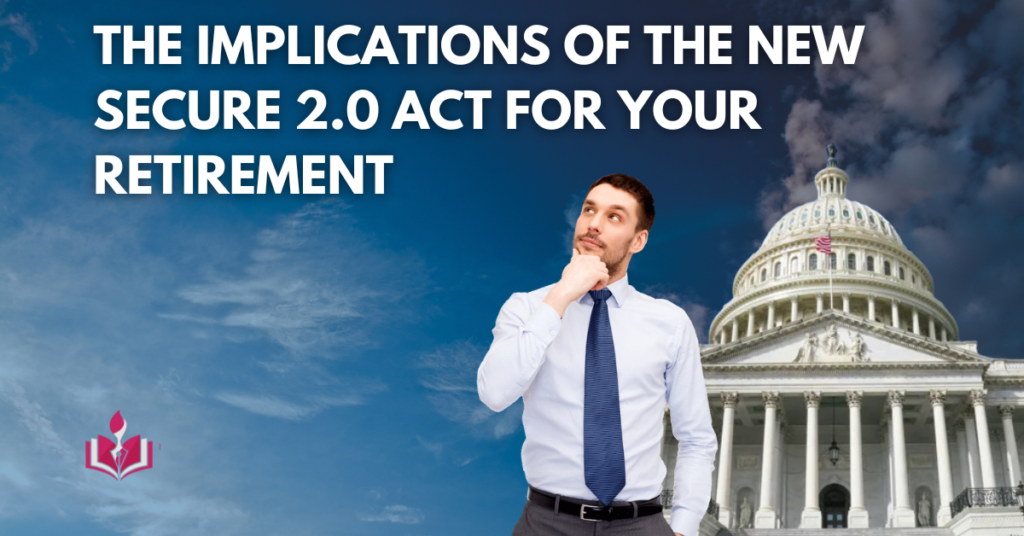Are your retirement is on the edge and you are worried about having enough money for retirement? No need to worry more, you’re not alone who is in this situation. There are Millions of Americans who are anxious about their golden years. Stay connected, we have good news for you. Secure 2.0 act passed recently. It brings a sigh of relief. The purpose of this act to help Americans to save more for retirement. For better understanding, Let’s break down the major provisions of the Secure 2.0 Act and explain how it can benefit you.
Automatic Enrollment
For 401k and 403b plans (and some SIMPLE IRA plans), the Secure Act now requires employers to automatically enroll employees who meet eligibility requirements. Employees must have the option to opt-out, but this new feature is expected to boost participation rates and improve retirement outcomes.
Typically, workers are automatically enrolled in their employer’s plan with a default investment choice—usually a target-date fund designed to help them earn enough investment returns by retirement. Research indicates that while this approach may result in lower-paid employees being over-matched, which could result in significant costs for their employers, it may also increase the total amount saved for retirement.
The guide to the SECURE 2.0 Act lets you seize up on contributions to retirement financial savings plans by means of the ones 50 and older in addition to vehicle-enrollment. Up to the $7,500 IRA contribution cap in 2023 can be contributed as a capture-up to maximum 457 packages, 401(ok) plans, 403(b), and the federal government’s Thrift Savings Plan.
The Secure Act consists of dozens of other provisions to offer new incentives for people to store and prepare for retirement. For example, it now lets small businesses join collectively to provide more than one corporation plans to reduce administrative expenses and make retirement plans extra on hand for their personnel. It also expands trouble withdrawal alternatives and gives a brand new incentive for matching scholar mortgage payments into retirement bills.
Pushing Back Required Minimum Distributions
The Secure 2.0 Act introduces many new provisions affecting retirement savings plans. Some changes take effect immediately, while others will be phased over the next year or year. For instance, the bill pushes back the onset of required minimum distributions (RMDs) from age 72 to 73. This change gives people still more time to grow their investments without worrying about RMDs. Also, the bill allows employees to withdraw small amounts of their retirement funds penalty-free from their workplace accounts for emergencies. It is a big deal because today, in such situations, people often have to borrow money or use credit cards that come with high-interest rates.
Job-hoppers will benefit from another provision of the new act, which allows them to automatically transfer any previous 401(k) account balance under $5,000 to their new employer’s plan. It is a welcome improvement over the current process, which involves rolling over their old credits every time they change jobs.
And for part-time workers, the bill expands the eligibility rules to include employer-matching contributions to 401(k) plans. It could help some workers compensate for lost opportunities to save during their early careers when they were focused on paying down student loan debt. The new law also reduces the vesting period for 401(k) matching contributions for new hires with five or more years of service, which is a positive change for many employers.
Student Loan Contributions
With many people struggling to keep, the new Secure 2.0 Act takes on some troubles, preventing them from setting money apart. It expands computerized enrollment in administrative center retirement plans and will increase capture-up contributions for employees over 50. It also changes how leftover balances in 529 university savings debts are handled. The new regulation allows employers to make a contribution to an worker’s retirement account primarily based on their monthly student loan fee amount in the event that they select to accomplish that. It will help address the problem of excessive scholar debt, which continues a few people from saving for retirement. In addition, starting in 2024, employees over 60-63 will be allowed to use their existing pretax catch-up contributions as Roth contributions if they want to.
The bill also allows simple IRAs and simplified employer pension (SEP) retirement plans to accept Roth contributions. Previously, these plans could only accept pretax contributions. This change will benefit small businesses that provide retirement plans for their employees, especially those that only offer 401(k)s and 403(b).
Catch-Up Contributions
When you’re saving for retirement, being able to put more of your income into tax-advantaged accounts is crucial. The new Secure Act 2.0 includes several changes to help you do that. One significant change is expanding and improving catch-up contributions. Starting in 2023, those age 50 or over can now contribute an extra $22,500 into workplace retirement plans like 401(k)s and Individual Retirement Accounts (IRAs). Additionally, the standard catch-up contribution limit is increasing and will be indexed to inflation annually. Similarly, the law allows employers to match student loan payments into retirement plan accounts. That’s designed to help combat the fact that student debt keeps many people from saving, and it will become effective in 2024.
Another change with the intention to assist people is permitting extra “emergency” withdrawals from pretax retirement savings bills. The regulation will allow you to withdraw as much as $1,000 without penalty in case you’re facing a monetary emergency and can pay off the money inside 3 years. These are only some of the ninety two provisions of the Secure Act 2.0 so that it will inspire Americans to shop for retirement. Strategically leveraging these new incentives will considerably advantage you and your personnel.

